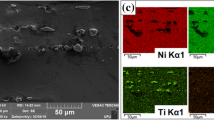Abstract
In grinding process, the abrasives plunge and slide against the workpiece during material removal with high specific energy consumption and high grinding zone temperature. To improve process efficiency, lubrication becomes an important requirement of the grinding fluids, along with chip removal and cooling the grinding zone. Grinding fluids have negative influences on the working environment and machining cost in terms of the health of the machine operator, pollution, the possibility of explosion (for oil), filtering, and waste disposal. The use of minimum quantity of lubrication (MQL) with an extremely low consumption of lubricant has been reported as a technologically and environmentally feasible alternative to flood cooling. This paper deals with an investigation of the grindability of hardened stainless steel (UNS S34700) and aluminum alloy AA6061 using dry, MQL, and conventional fluid techniques. One type of SiC and five types of Al2O3 wheels (corundum) as well as vegetable and synthetic ester MQL oils have been tested. The influences of wheel and coolant–lubricant types have been studied on the basis of the grinding forces, surface topography, and surface temperature. Synthetic ester MQL oil was found to give better grinding performance than the vegetable MQL oils. It was argued that the improved performance of the ester oil is caused by the formation of tribo-films on the abrasives and the workpiece, which enhances lubrication by inhibiting metal–abrasive interaction. Also, the grindability of the machined specimens was found to increase substantially by using the MQL grinding process with soft and coarse wheels. In MQL grinding of AA6061 alloy, the use of vegetable oil resulted in the lowest surface roughness, whereas using synthetic ester additives lead to highest surface roughness because of higher chip loading on the grinding wheel and consequently more redeposited material on the workpiece surface.
Similar content being viewed by others
References
Marinescu ID, Hitchiner M, Uhlmann E, Rowe WB, Inasaki I (2007) Handbook of machining with grinding wheels. CRC Press, Boca Raton
Tawakoli T, Westkaemper E, Rabiey M (2007) Dry grinding by special conditioning. Int J Adv Manuf Technol 33:419–424
Tawakoli T, Westkämper E, Rabiey M, Rasifard A (2007) Influence of the type of coolant lubricant in grinding with CBN tools. Int J Mach Tool Manuf 45:734–739
Tawakoli T, Azarhoushang B (2008) Influence of ultrasonic vibrations on dry grinding of soft steel. Int J Mach Tool Manuf 48(14):1585–1591
Tawakoli T, Hadad MJ, Sadeghi MH, Daneshi A, Stöckert S, Rasifard A (2009) An experimental investigation of the effects of workpiece and grinding parameters on minimum quantity lubrication-MQL grinding. Int J Mach Tool Manuf 49:924–932
Silva LR, Bianchi EC, Catai RE, Fusse RY, França TV, Aguiar PR (2005) Study on the behavior of the minimum quantity lubricant-MQL technique under different lubrication and cooling conditions when grinding ABNT 4340 steel. J Braz Soc Mech Sci Eng XXVII:192–199
J. Paulo Davim (2008) Machining: fundamentals and recent advances, chapter 7. In: V.P. Astakhov (ed.) Ecological machining: near-dry machining. Springer, London
Silva LR, Bianchi EC, Fusse RY, Catai RE, França TV, Aguiar PR (2007) Analysis of surface integrity for minimum quantity lubricant-MQL in grinding. Int J Mach Tool Manuf 47:412–418
Brinksmeier E, Brockhoff T, Walter A (1997) Minimalmengenschmierung und Trockenbearbeitung beim Schleifen. HTM: Carl Hanser Verlag München 52(3):166–170
D Hafenbraedl, S Malkin (2001) Technology environmentaly correct for intern cylindrical grinding. Mach Metals Mag 40–55
B. Shen (2008) Minimum quantity lubrication grinding using nanofluids. Ph.D. thesis, The University of Michigan, Michigan, USA
Tawakoli T, Hadad MJ, Sadeghi MH (2010) Influence of oil mist parameters on minimum quantity lubrication—MQL grinding process. Int J Mach Tool Manuf 50:521–531
Tawakoli T, Hadad MJ, Sadeghi MH (2010) Investigation on minimum quantity lubricant—MQL grinding of 100Cr6 hardened steel using different abrasive and coolant–lubricant types. Int J Mach Tool Manuf 50:698–708
Tawakoli T, Hadad MJ, Sadeghi MH, Daneshi A, Sadeghi B (2011) Minimum quantity lubrication in grinding: effects of abrasive and coolant–lubricant types. J Clean Prod 19:2088–2099
Hadad MJ, Tawakoli T, Sadeghi MH, Sadeghi B (2012) Temperature and energy partition in minimum quantity lubrication—MQL grinding process. Int J Mach Tool Manuf 54–55:10–17
M. Rabiey (2011) Dry grinding with CBN wheels: the effect of structuring. Ph.D. thesis, The University of Stuttgart, Stuttgart, Germany
Malkin S, Guo C (2008) Grinding technology: theory and applications of machining with abrasives, 2nd edn. Industrial Press Inc., New York
Marinescu ID, Rowe WB, Dimitrov B, Inasaki I (2004) Tribology of abrasive machining processes. William Andrew, Norwich
Sadeghi MH, Haddad MJ, Tawakoli T, Emami M (2009) Minimal quantity lubrication—MQL in grinding of Ti–6Al–4V titanium alloy. Int J Adv Manuf Technol 44:487–500
Barczak LM, Batako ADL, Morgan MN (2010) A study of plane surface grinding under minimum quantity lubrication (MQL) conditions. Int J Mach Tool Manuf 50:977–985
Kalita P, Malshe AP, Rajurkar KP (2012) Study of tribo-chemical lubricant film formation during application of nanolubricants in minimum quantity lubrication (MQL) grinding. CIRP Ann Manuf Technol 61:327–330
Kalita P, Malshe AP, Kumar SA, Yoganath VG, Gurumurthy T (2012) Study of specific energy and friction coefficient in minimum quantity lubrication grinding using oil-based nanolubricants. J Manuf Process 14:160–166
Author information
Authors and Affiliations
Corresponding author
Rights and permissions
About this article
Cite this article
Hadad, M., Hadi, M. An investigation on surface grinding of hardened stainless steel S34700 and aluminum alloy AA6061 using minimum quantity of lubrication (MQL) technique. Int J Adv Manuf Technol 68, 2145–2158 (2013). https://doi.org/10.1007/s00170-013-4830-3
Received:
Accepted:
Published:
Issue Date:
DOI: https://doi.org/10.1007/s00170-013-4830-3



